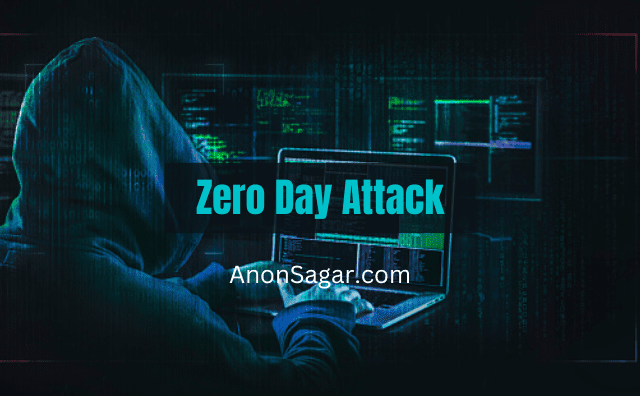What is a Zero-Day Attack?
A zero-day attack is an attack that uses a previously unknown vulnerability in a computer application or operating system. A zero-day attack can be used to compromise security in a number of ways, such as allowing remote code execution, privilege escalation, bypassing security controls, and compromising the confidentiality, integrity, and availability of data.
The term “zero-day” refers to the unknown nature of the vulnerability, i.e. that the software’s developers or vendors have had zero days to address and patch the security flaw.
The term “zero-day” is also used in other contexts, such as to describe the time between when a new software vulnerability is discovered and when an exploit for that vulnerability is made public. In this context, a zero-day attack or threat is an attack that uses an exploit for a previously unknown vulnerability. The term can also refer to the time between when a new software vulnerability is discovered and when a patch for that vulnerability is released.
Zero-day attacks are often used by hackers for a number of reasons, including:
– Bypass security controls: Zero-day attacks can be used to bypass security controls, such as firewalls, intrusion detection systems, and antivirus software.
– Escalate privileges: Zero-day attacks can be used to escalate privileges, such as by gaining access to a system with administrator privileges.
– Compromise confidentiality: Zero-day attacks can be used to compromise the confidentiality of data, such as by stealing sensitive information or planting malware.
– Compromise integrity: Zero-day attacks can be used to compromise the integrity of data, such as by modifying or deleting files.
– Compromise availability: Zero-day attacks can be used to compromise the availability of data or systems, such as by denial-of-service attacks.
Zero-day attacks are often used in targeted attacks, where the attacker carefully selects their targets and tailors their attack to the specific system. Targeted attacks are typically carried out by sophisticated attackers, such as nation-states, and are often used to achieve a specific goal, such as espionage or data theft.
These types of attacks can have a significant impact on organizations and individuals. For organizations, zero-day attacks can lead to data breaches, financial losses, and reputational damage. For individuals, zero-day attacks can lead to identity theft, fraud, and cyberbullying.
It is often very difficult to defend against such attacks because they exploit unknown vulnerabilities. Organizations can reduce the risk of zero-day attacks by ensuring that their systems are up-to-date with the latest security patches, using intrusion detection systems, and implementing application whitelisting.
How Do Zero-Day Attacks Work?
Zero-day attacks exploit vulnerabilities that are unknown to the software’s developers or vendors. These vulnerabilities can be found in a number of places, such as in the software’s code, in its configuration, or in the way it interacts with other systems.
Zero-day attacks can be used to compromise security in a number of ways, such as by:
– Allowing remote code execution: Zero-day attacks can allow attackers to execute code remotely on a vulnerable system. This can be used to gain access to the system, plant malware, or steal data.
– Escalating privileges: Zero-day attacks can be used to escalate privileges, such as by gaining access to a system with administrator privileges.
– Bypassing security controls: Zero-day attacks can be used to bypass security controls, such as firewalls, intrusion detection systems, and antivirus software.
– Compromising confidentiality: Zero-day attacks can be used to compromise the confidentiality of data, such as by stealing sensitive information or planting malware.
– Compromising integrity: Zero-day attacks can be used to compromise the integrity of data, such as by modifying or deleting files.
– Compromising availability: Zero-day attacks can be used to compromise the availability of data or systems, such as by denial-of-service attacks.
Zero-day attacks are often used in targeted attacks, where the attacker carefully selects their targets and tailors their attack to the specific system. Targeted attacks are typically carried out by sophisticated attackers, such as nation-states, and are often used to achieve a specific goal, such as espionage or data theft.
What is the Impact of Zero-Day Attacks?
Zero-day attacks can have a significant impact on organizations and individuals.
For organizations, zero-day attacks can lead to data breaches, financial losses, and reputational damage. Data breaches can result in the disclosure of sensitive information, such as customer data, financial data, or trade secrets. Financial losses can occur due to the costs of responding to the attack, such as incident response, customer support, and legal fees. Reputational damage can occur due to the negative publicity associated with the attack.
For individuals, zero-day attacks can lead to identity theft, fraud, and cyberbullying. Identity theft can occur when attackers use stolen personal information, such as Social Security numbers or credit card numbers, to open new accounts or make purchases in the victim’s name. Fraud can occur when attackers use stolen personal information to apply for loans or credit cards, or to make false insurance claims. Cyberbullying can occur when attackers use personal information to harass, threaten, or embarrass the victim.
Zero-day attacks can also have a significant impact on national security. Zero-day attacks can be used to carry out espionage or sabotage, or to launch attacks against critical infrastructure.
How Can Zero-Day Attacks be Prevented?
Zero-day attacks are often difficult to defend against because they exploit unknown vulnerabilities. Organizations can reduce the risk of zero-day attacks by taking a number of preventive measures, such as:
– Ensuring that their systems are up-to-date with the latest security patches: Security patches can address known vulnerabilities and help to prevent zero-day attacks.
– Using intrusion detection systems: Intrusion detection systems can help to detect and block attacks that exploit known vulnerabilities.
– Implementing application whitelisting: Application whitelisting can help to prevent malicious code from running on a system.
– Restricting access to systems and data: Restricting access to systems and data can help to prevent unauthorized users from accessing sensitive information.
– Training employees: Training employees on security awareness can help them to identify and report suspicious activity.



